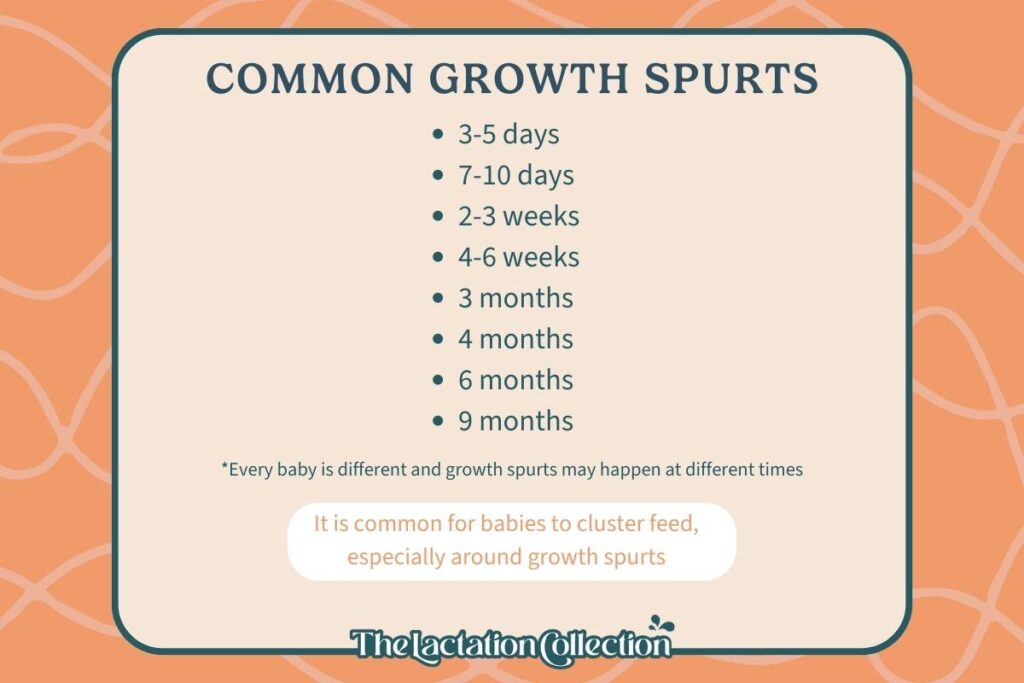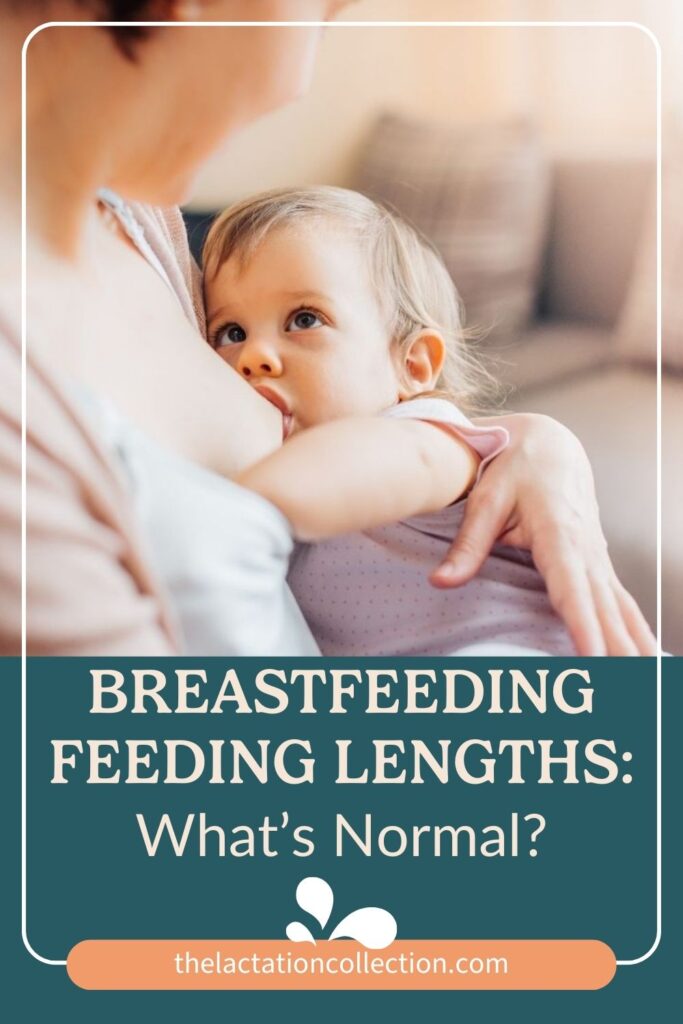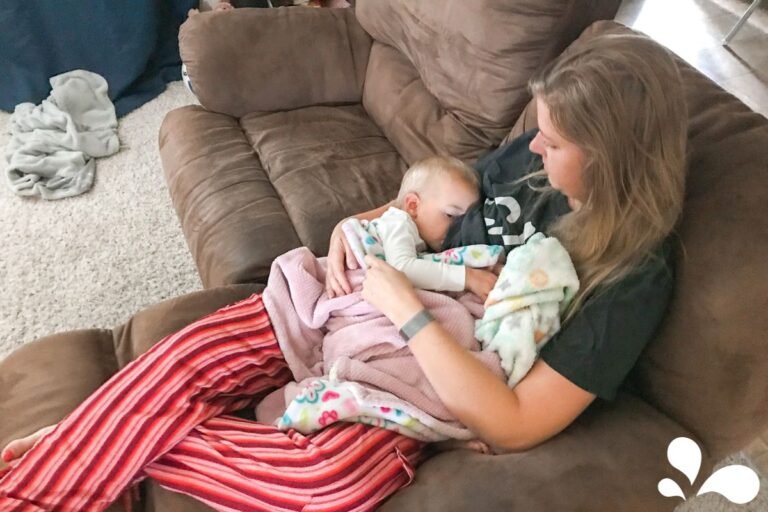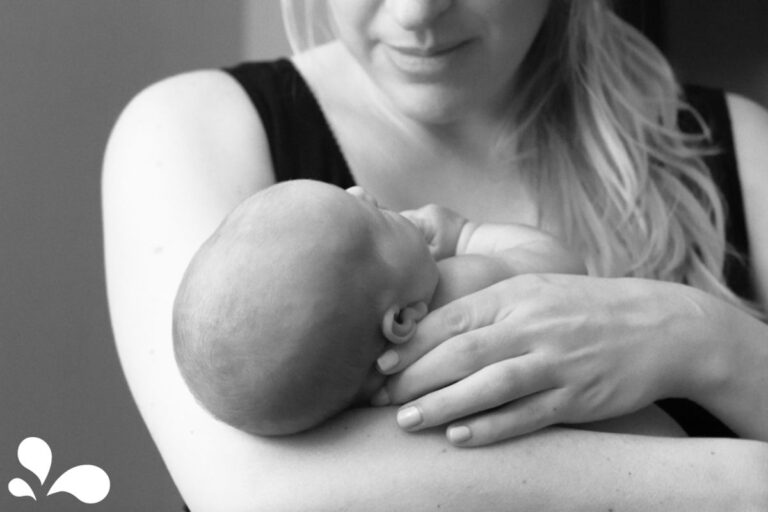We hate to burst your bubble, but there is no precise answer to “what is a normal breastfeeding length?” There are a variety of different reasons why a baby’s feeding length may differ. Just like we sometimes need a drink, a snack, a meal, or a feast, baby can be the same way. As you may have noticed from my other blog posts, each breastfeeding experience is different, and so is every mom and her supply.

Newborns
It is common for newborns to spend 10-20 minutes per breast at each feeding. This length is often because baby is not yet efficient at removing milk from the breast and must build up both the strength and stamina necessary to feed faster and more efficiently.
You may struggle to keep baby awake during feedings. You can always rub baby’s back or break the latch and switch baby to the other side after twenty minutes. Keeping baby awake during those first few weeks can be a struggle.
It is recommended to feed baby on-demand and at least every 2-3 hours (read more about on-demand breastfeeding). By doing so, your baby will get the necessary nutrition, and you’ll establish the essential supply.
Older Babies
After three months, baby may be able to empty your breast within 5-10 minutes. You’ll also notice that times between feedings get longer.
By six months, your baby may not be as interested in longer feedings and may substitute lengthy feedings for quick feeds during the day with longer, calming night feeds. These types of feeds are perfectly normal as you integrate solids and drinking from cups into baby’s routine.
As your baby ages into toddlerhood, breastfeeding isn’t as integral to baby’s diet. However, it can provide comfort. You may notice a greater desire to feed when your baby experiences illness, change, or injury.

At Any Age
Within any stage, cluster feeding is normal. Cluster feeding is especially normal around growth spurts, which often occur at two weeks, four weeks, three months, four months, and six months of age. The best way to address cluster feeding is by hunkering down and taking a “nursing vacation” if possible. Just focus on feeding baby and find peace in knowing it won’t last forever.

Know that your breast is always making breastmilk and is never “fully empty.” This means you can put baby to the breast whenever they show signs of hunger (see hunger cues blog post). It is better to feed baby whenever baby needs it and not by an arbitrary schedule.
Your baby may even seem fussier at night, needing to breastfeed more often and for longer. This is entirely normal. Feed your baby on demand and know that milk at night is fattier even if the flow is slower. You can help soothe your baby by implementing babywearing, stepping outside, soothing with sound or motion, providing a bath, or reducing stimulation.
Further, it is essential to remember that breastfeeding is for more than just nutrition for baby. It helps them to relax; it comforts them with warmth, love, and reassurance. While it isn’t always the easiest, breastfeeding is a beautiful way to provide the beginnings of a loving relationship with your child.








